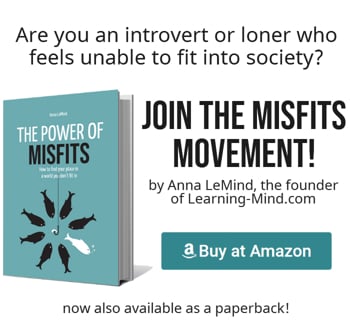During the 1970s, Elizabeth Noelle-Neumann, a German political scientist, developed the spiral of silence theory. Working in the context of post-World War Two Germany, Noelle-Neumann coined the theory. She sought to explain why individuals choose to remain silent when they believe their view isn’t held by the majority.
In this post, we look at how the spiral of silence can explain human behavior. We will also consider whether or not the theory is still relevant today.
Spiral of silence theory explained
The theory was coined by Elizabeth Noelle-Neumann in 1974. It was partly designed in an attempt to explain the lack of resistance to the Nazi regime. The idea of the spiral of silence suggests that people remain silent when they think their views are different from majority viewpoints.
According to the theory, this unwillingness to speak out is due to fear of social isolation. It is also due to the expected negative consequences of going against the perceived status quo. On the other hand, those confident their beliefs and opinions meet ‘public opinion’ can voice their thoughts without fear. This also perpetuates the silencing effect on those in the minority.
We are all able to determine what the prevailing ‘public opinion’ actually is, according to the theory. In Noelle-Neumann’s words, we all have a ‘quasi statistical sense’ of whether our own opinions are either popular or unpopular. This is based on the cues we have had from the mass media and our environment. In other words, we have a ‘sixth sense’ of the popular public consensus on a range of issues.
The spiral effect begins to occur as those who feel validated about their beliefs become more and more vocal. Concurrently, those in the minority lose confidence in expressing their opinions. This loss of confidence is built on the fear of rejection and subsequent social isolation.
As a result, the minority are silenced. In this way, predominating public opinion is seen as a form of social control in the spiral of silence theory.
Research into the theory
Since the theory of the spiral of silence was developed, there have been numerous studies that have tested it. These studies have sought to either prove or disprove its legitimacy. The majority of these studies have focused on the effect of the theory in political environments.
Most recently, a meta-analysis conducted by Matthes et al (2017) revisited the theory and the effect of the spiral of silence on either restricting or enabling the expression of political opinions. They analyzed 66 studies exploring this topic which collectively contained 27,000 participants.
The analysis found that there was a significant positive relationship between one’s perception of the prevailing opinion and the subsequent suppression of their own opinions. This was seen to be particularly acute when amongst family, friends, and neighbors.
Despite this result, there are critics of the theory. Some have criticized the assumption that we all have an in-built understanding of what the prevailing climate of opinion is, and whether there can actually be something that can be defined as such.
Others have questioned the theoretical underpinning that fear of isolation is a strong enough deterrent for silencing a minority opinion. There have also been criticisms of the theory’s failure to take into account cross-cultural differences. Others have noted that the nature of the issue itself can impact on the spiral of silence effect.
How relevant is the spiral of silence today?
With the rise of alternative online media channels and social media, critics of the spiral of silence are suggesting that the theory is no longer relevant. The theory was proposed pre-internet and was based on a mass-media that was relatively uniform.
Today, the mainstream media often follows the same trajectory. However, the internet has provided people the opportunity to seek alternative opinions. It has also given voice to those who have previously been disadvantaged by unequal power relations.
If an individual does not wish to publicly express their opinion amongst friends, family, or colleagues they may well do so anonymously via the internet. This is sometimes known as the online disinhibition effect. This itself creates its own spiral effect.
However, within this context, a minority opinion may no longer be felt as such. This is due to the fact that the World Wide Web enables the participation of many within the political domain.
The birth of the internet, therefore, has shifted the conversation around the spiral of silence into a new trajectory. While some believe the theory has had its day, others still see the theoretical concept as a useful means of exploring behavior.
Using it as a starting point for many studies into whether a climate of opinion can still be said to exist, and how this affects our willingness to speak out about controversial opinions that we deem to go against the grain.
Does it ring true for you?
The spiral of silence, therefore, may have struck a chord with your own behavior and responses. Ever felt silenced during a political conversation? Fear of isolation or rejection is certainly something we can all relate to.
So, while the spiral of silence theory may need some modern re-jigging, as a concept, it can certainly serve to explain those occasions where we ponder about what we could have said, only when it is too late to say it.





A great introductory opportunity to explore humanity’s sheep-like qualities. But personalizing will require more work.
Knowing this one of the relevant theories is great; so now what will people do when they answer “Does it ring true for you?” in the affirmative.
Knowing the theories behind one;’s behaviour is only the first component of changing how one responds or reacts to our world. To make behavioural changes is never easy. and requires self-honesty, self-reflection, and for some like me, “over-thinking” of which others accuse me regularly. LOL
So here’s more theory; being a sheep means one is controlled by a compulsive fear, obsession, or another catalyst deeper inside of us.
If and when we decide that we’re not satisfied with how we do what we do, and if it seems too hard, first understand that “the genius will be in the details;” in other words, one small step at a time, with professional help when we reach apparently insurmountable challenges to growth.
But as i have found over the years, growth is worth the hard work. At least it has been, and continues to be for me.